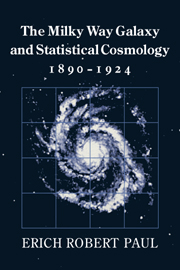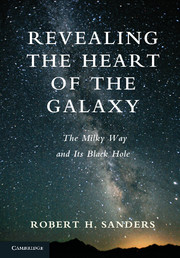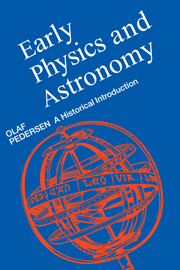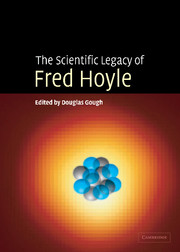The Milky Way Galaxy and Statistical Cosmology, 1890–1924
Drawing on previously unused archival material, Erich Robert Paul presents the first complete examination of cosmological science and the conception of the galaxy during this formative period. He describes the rise of statistical cosmology, its establishment as the leading area of astronomical research, and finally its decline and the transition to modern methods. He pays particular attention to the accomplishments of two influential astronomers of this period, J. C. Kapteyn and Hugo von Seeliger.
Reviews & endorsements
"...traces the history of statistical astronomy and how the failure of its paradigm shaped the "new" universe of the 20th century. Astronomers who have a soft spot for history will find this an interesting book." Astronomy
"...should be accessible and interesting to most historians of science." David Kaiser, Historical Studies in the Physical and Biological Sciences
"...a very welcome contribution to the literature..." David DeVorkin, Science
"In this book Erich Robert Paul fills a gap in the history of cosmology by writing of research just predating Shapley's....[B]ecause Paul covers important new material, much of it archival, anyone interested in the history of modern astronomy should read this book." Joann Eisberg, Isis
Product details
November 2006Paperback
9780521027342
280 pages
230 × 156 × 16 mm
0.397kg
Available
Table of Contents
- List of illustrations
- Acknowledgments
- Abbreviations of manuscript sources
- Introduction
- Part I. The Nineteenth-Century Background:
- 1. Early nineteenth-century statistical astronomy
- 2. Statistical astronomy and the Milky Way Galaxy
- Part II. Statistical Cosmology, 1890–1924:
- 3. Seeliger and stellar density
- 4. Kapteyn and the distribution of stars
- 5. Statistical astronomy as a research program, 1900–15
- 6. Statistical cosmology as a research program, 1915–22
- 7. Internationalization of astronomy
- Part III. Statistical Cosmology and the Second Astronomical Revolution:
- 8. The decline of a research program
- 9. Conclusion: research programs in transition
- Appendix 1: Seeliger's star-ratio function
- Appendix 2: Seeliger's density theorem
- Bibliographical notes
- Index.






